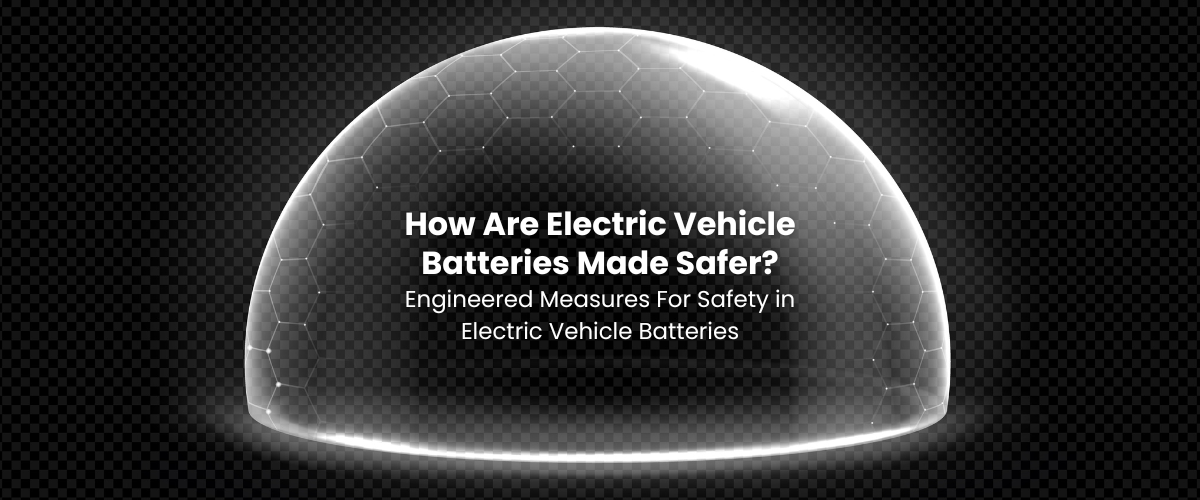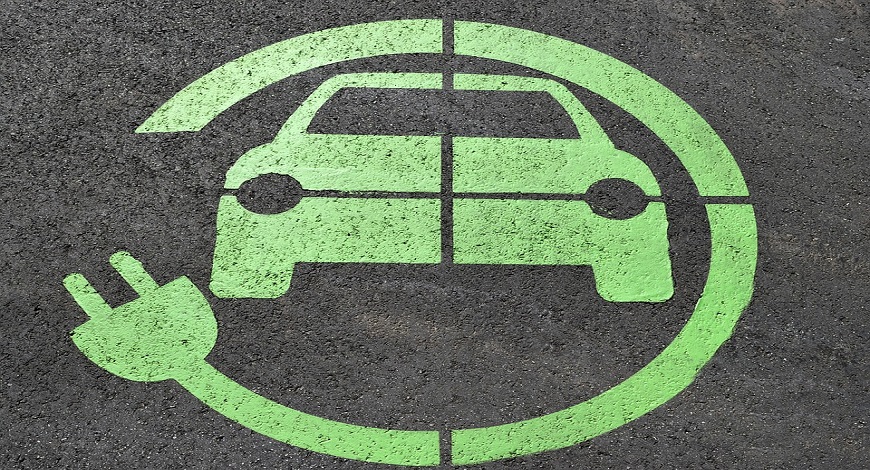
EV battery safety is a crucial aspect of the transition to electric mobility, as it affects the performance, reliability, and environmental impact of EVs. Battery safety involves preventing and mitigating the risks of thermal runaway, fire, explosion, leakage, and other hazards that may occur due to electrical, mechanical, or thermal abuse of the battery.
Lithium Ion Battery technology sees widespread action in electric vehicles (EVs) due to their high energy density, long cycle life, reliability, and cost-effectiveness. The Lithium Ion Battery consists of a cathode, an anode, and a liquid electrolyte that facilitates lithium-ion movement from the anode to the cathode. However, beyond its performance benefits, the engineers behind these batteries have also prioritized safety measures to ensure the secure operation of EVs.
This edition of Battery Decoded aims to overview the recent advances in EV battery safety, the ground that has been covered for some time, and what’s next.
One of the key safety features of lithium-ion batteries is their built-in protection circuitry. This circuitry helps monitor and control various parameters such as voltage, current, and temperature. It acts as a safeguard against overcharging, over-discharging, and short circuits that could potentially lead to thermal runaway or even fires.
The Lithium Ion Battery also features a porous separator, which is vital in maintaining EV safety, as it ensures that the anode and the cathode do not come in direct contact with each other. The separator is engineered to prevent thermal runaway, which is a condition where the Lithium Ion Battery temperature increases uncontrollably, leading to a blazing fire or explosion.
The separator is typically made of a polymer material that melts when the temperature exceeds a certain threshold, shutting down the battery. In addition to the separator, the battery management system (BMS) is another critical component that ensures battery safety and is also responsible for on-the-go battery diagnostics and maintenance.
The BMS monitors the battery’s state of charge, temperature, and voltage, and controls the charging and discharging process to prevent overcharging, over-discharging, and overheating.
Overall, lithium-ion batteries are engineered with multiple safety features to ensure that they are safe and secure for use in EVs.
To prevent safety hazards associated with Lithium Ion Battery applications in EVs, it is important to follow the manufacturer’s instructions and use only authorized batteries and charging equipment. H ty hazards:
Also Explore: Types of Batteries in Electric Vehicles
EVs are inclined to have a lower center of gravity than conventional ICE vehicles, as the typically longer and flatter EV batteries are placed in a wide configuration within the frame of the EV along the bottom of the vehicle, which makes them more stable and less likely to roll over. In case of a fire, the same safety procedures as for any vehicle fire should be followed.
What EV Sector Stakeholders Have Done For Electric Vehicle Battery Safety?
Electric vehicles (EVs) are generally considered to be as safe or safer than internal combustion engine (ICE) vehicles. EVs undergo rigorous safety testing and generally perform better than ICE vehicles in crash tests. Electric vehicle battery packs are tested for conditions such as overcharge, vibration, extreme temperatures, short circuits, humidity, fire, collision, and water immersion (a recent development).
Various automakers are amidst the challenge of addressing safety concerns around EVs. As car companies lower the costs of batteries and address range anxiety issues around EVs, safety considerations will be paramount.
Governments are also taking steps to ensure the safety of Electric Vehicle batteries. For example, the European Union has established a regulatory framework for the safety of electric vehicles, which includes safety requirements for battery systems, charging systems, and electric powertrain systems. The National Highway Traffic Safety Administration (NHTSA) is advancing proposals to increase safety parameters, including mitigating fire during normal vehicle operations, charging, and post-crash, for propulsion batteries in electric vehicles.
As with any new and disruptive technology, it is vital that the industry develops and implements best practices and safety standards, and employs the right combinations of battery chemistry, cell design, BMS, and Battery Thermal Management Systems (BTMS) to minimize the risks of such incidents. Many governments have enacted or updated regulations and policies to ensure the safety of EV batteries, both in use and after their end-of-life.
Standards organizations have developed or revised various standards and guidelines to harmonize the safety requirements and testing methods for EV batteries. For example:
Overall, EV manufacturers, battery manufacturers, standard organizations, and governments are taking several steps to ensure the safety of EVs. These include rigorous safety testing, additional safety features, and the implementation of continually updated best practices and safety standards. Governments are also establishing regulatory frameworks for the safety and sustainability of electric vehicles.
Based on official sources, the industry has planned to make batteries safer by pursuing the following goals:
By innovating and engineering lithium-ion batteries with robust safety features and implementing stringent quality control measures throughout production processes, manufacturers and R&D teams alike are continually ensuring that these energy storage solutions not only provide efficient power but also prioritize user safety and environmental sustainability.
Follow LOHUM’s series on simplifying batteries and battery recycling, #BatteryDecoded, on our LinkedIn page and Blog for more insightful content on sustainability, battery energy, energy transition, circular economy, battery recycling, and battery repurposing!
Related blogs
This entrepreneur wants India to make its own lithium-ion cells for electric vehicle batteries

Forbes India
Rajat Verma already recovers raw materials from used cells at his venture, LOHUM Cleantech. He wants to close the loop by making cells in India as well.
India needs integrated recycling and repurposing battery business model: Rajat Verma of LOHUM Cleantech

YOURSTORY
In an interaction with AutoStory, Rajat Verma, Founder and CEO of LOHUM Cleantech, speaks about building his company, and about battery manufacturing and repurposing as an industry.
Sourcing Raw Materials Is A Big Challenge In Li-ion Battery Space: Founder Lohum

Business World Disrupt
Recognized as ‘The Most Innovative Company of the year 2022’ by The Confederation of Indian Industry (CII), LOHUM is a producer of sustainable Li-ion battery raw materials
1800 572 8822
Email : enquiry@lohum.com
G98, Site, 5, Kasna, Block A, Surajpur Site V, Greater Noida, Uttar Pradesh 201306
LOHUM Cleantech Private Limited, Plot No. D-7 & 8, Site 5th, Kasna Industrial Area, Greater Noida, Gautam Budh Nagar, Uttar Pradesh – 201308
LOHUM Cleantech Private Limited, Plot No. O-17, Site 5th, Kasna Industrial Area, Greater Noida, Gautam Budh Nagar, Uttar Pradesh – 201308